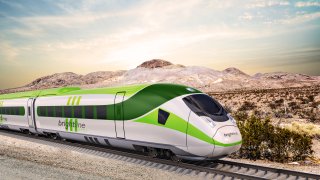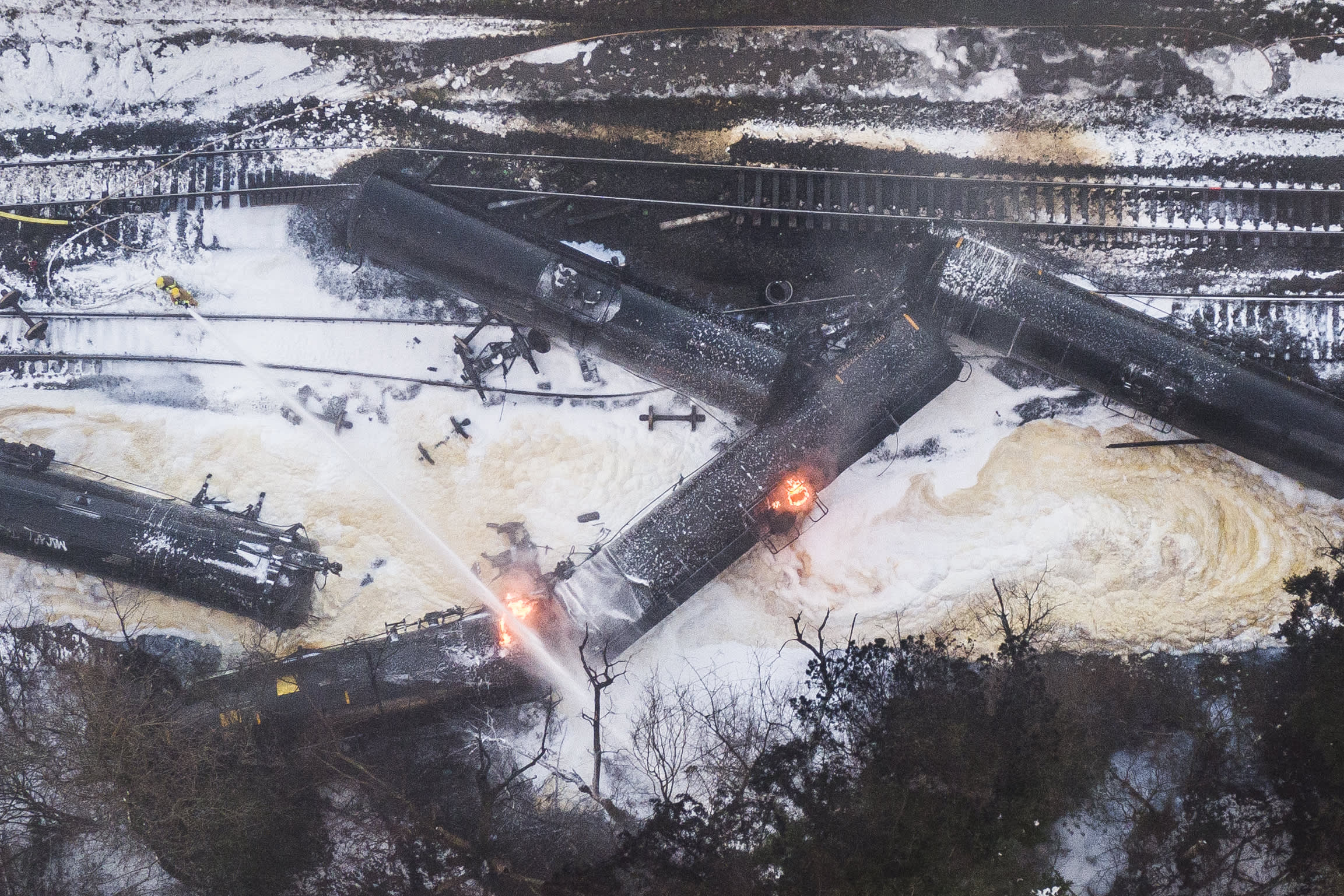
A bipartisan congressional group from Nevada and California asked the Biden administration Monday to fast-track federal funds for a private company to build a high-speed rail line between Las Vegas and the Los Angeles area.
All six of Nevada’s elected federal lawmakers and four House members from California said in a letter to U.S. Transportation Secretary Pete Buttigieg that they’re on board with a proposal from a private company, Brightline West, to spend more than $10 billion to lay tracks for trains that would whisk passengers generally along the traffic-clogged Interstate 15 corridor.
“This project is a major priority because it will make southern Nevada more accessible to millions of visitors each year,” said U.S. Sen. Jacky Rosen, the Nevada Democrat leading the group. “That means more people spending money at our hotels, restaurants, casinos, and small businesses and attending conventions, sports competitions, and world-class special events, which will boost our economy and create more good-paying jobs.”
Brightline West is seeking $3.75 billion in federal funding from the Biden administration-backed federal infrastructure law. The company and the Southern Nevada Building Trades Union announced in recent weeks that union labor will be used during construction.
Get top local stories in Southern California delivered to you every morning. >Sign up for NBC LA's News Headlines newsletter.
“After more than a decade of working to find a pathway, Brightline West will be the first true high-speed rail system in America and will serve as the blueprint for how we can connect major city pairs that are too short to fly and too far to drive,” said Mike Reininger, CEO of Florida-based Brightline Holdings LLC.
The lawmakers’ letter pointed to company projections of 35,000 construction jobs, 1,000 permanent jobs and the diversion of “millions of automobile users from I-15 onto a faster, more efficient, zero-emission transportation option.”
Amtrak passenger service to Las Vegas ended in 1991 with the demise of a train called the Desert Wind. The concept of building a bullet train through the Mojave Desert dates to at least 2005 under various names. It has seen starts and stops over the years and became sidetracked during the COVID-19 pandemic.
Brightline is the only privately owned and operated intercity passenger railroad in the United States. In Florida, Brightline West’s sister company began sharing the Florida East Coast freight line between Miami and West Palm Beach in 2014 and is building an extension to Orlando. High-speed trains running through urban areas have drawn criticism for numerous crashes with vehicles at rail crossings. Investigators found none of the deaths were the railroad’s fault, determining that many were suicides or drivers or pedestrians trying to beat the trains.
Other places where high-speed trains have been proposed include the 240 miles (386 kilometers) from Dallas to Houston in Texas, and a 500-mile (805-kilometer) system linking Los Angeles and San Francisco. Completion of the California line depends on funding and other unknowns.
The Mojave Desert is largely open space, and a Brightline West trip might cut a more than four-hour trip in half. Trains carrying 500 passengers at speeds of nearly 200 mph (322 kph) would connect Las Vegas, Victorville, California, and Rancho Cucamonga — a city in San Bernardino County with a passenger station on a suburban Los Angeles light rail line.
Nevada’s senior U.S. Sen. Catherine Cortez Masto, a Democrat, and all four of the state’s House members including Republican Mark Amodei signed the letter seeking federal-state partnership funding through the Federal Railroad Administration’s Intercity Rail Grant Program.
California Democratic House members Nanette Barragán and Jimmy Gomez from the Los Angeles area and John Garamendi of the East Bay area signed on, along with Republican Jay Obernolte, who represents the Victorville and San Bernardino County area.
Traffic jams on Interstate 15 often stretch 15 miles (24 kilometers) or more near the Nevada-California line as motorists return to the Los Angeles area after weekend and holiday travel.
“This bipartisan delegation from Nevada and California are pleased to support the federal resources necessary to develop essential transportation access between this highly trafficked corridor,” the lawmakers said.



